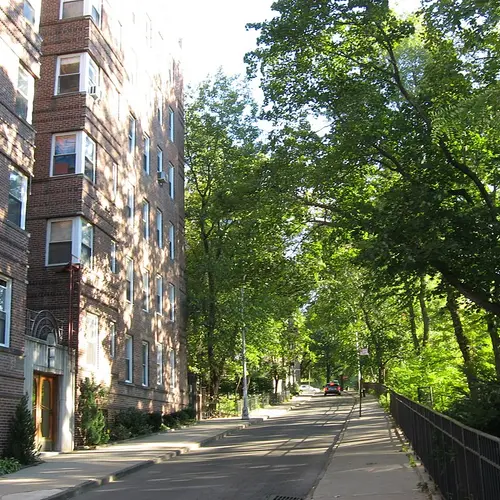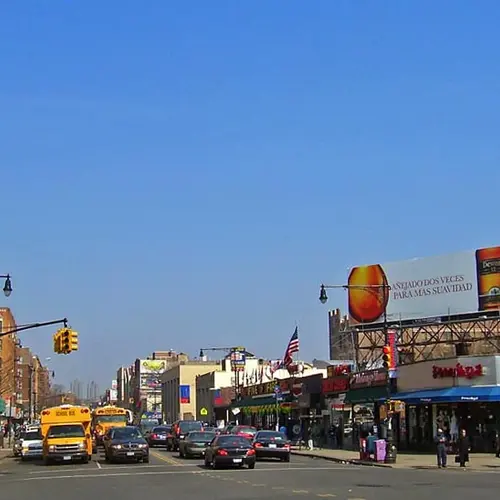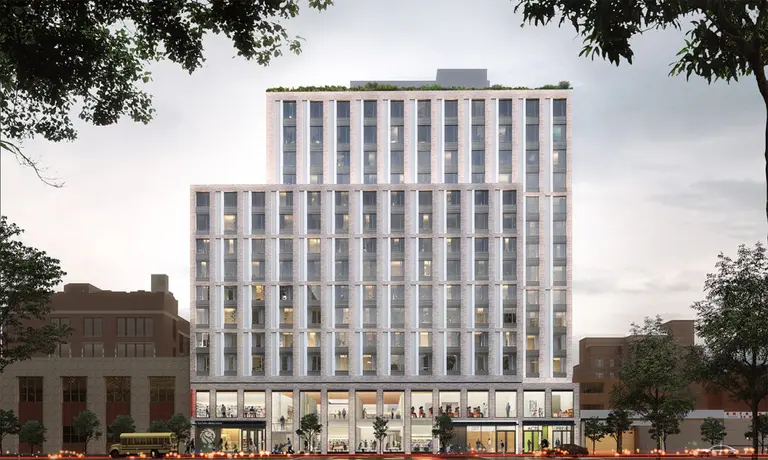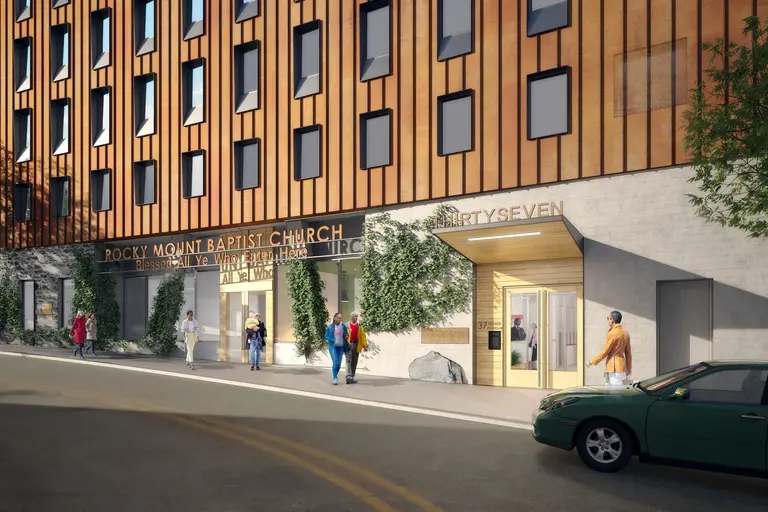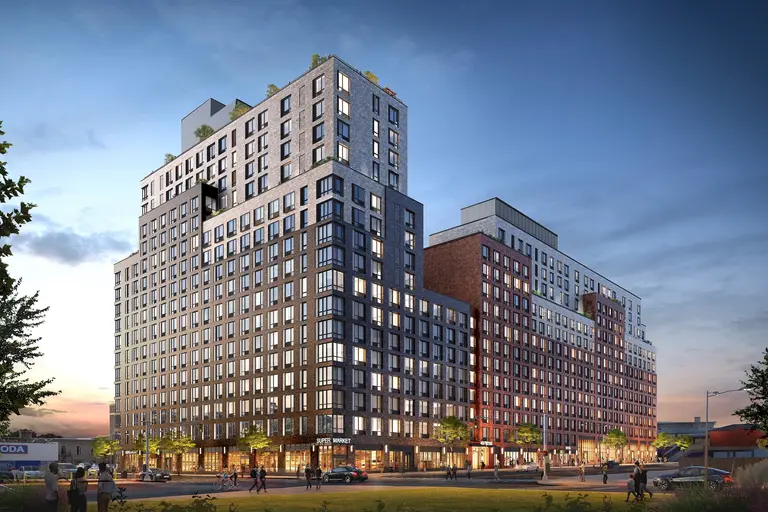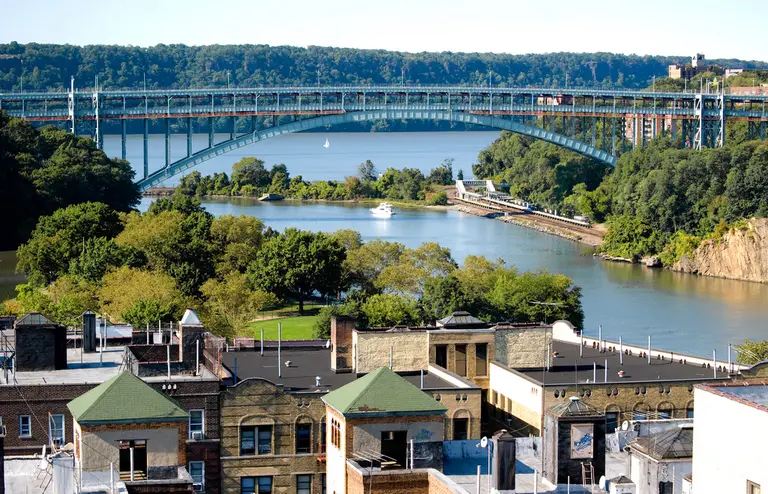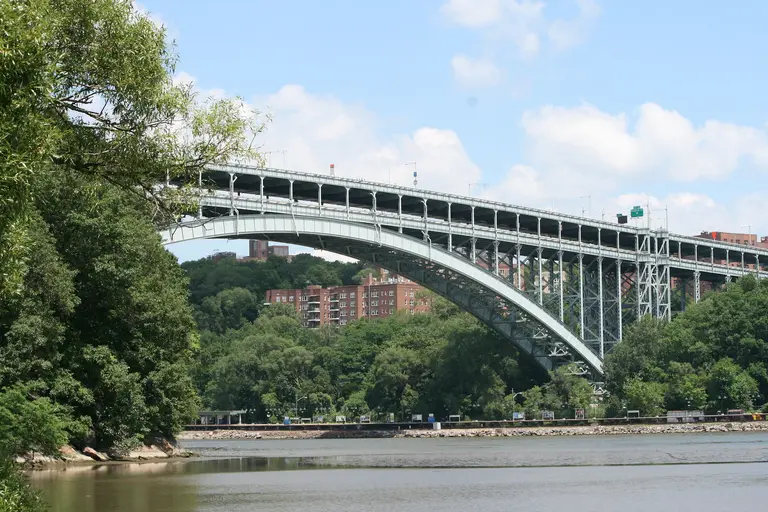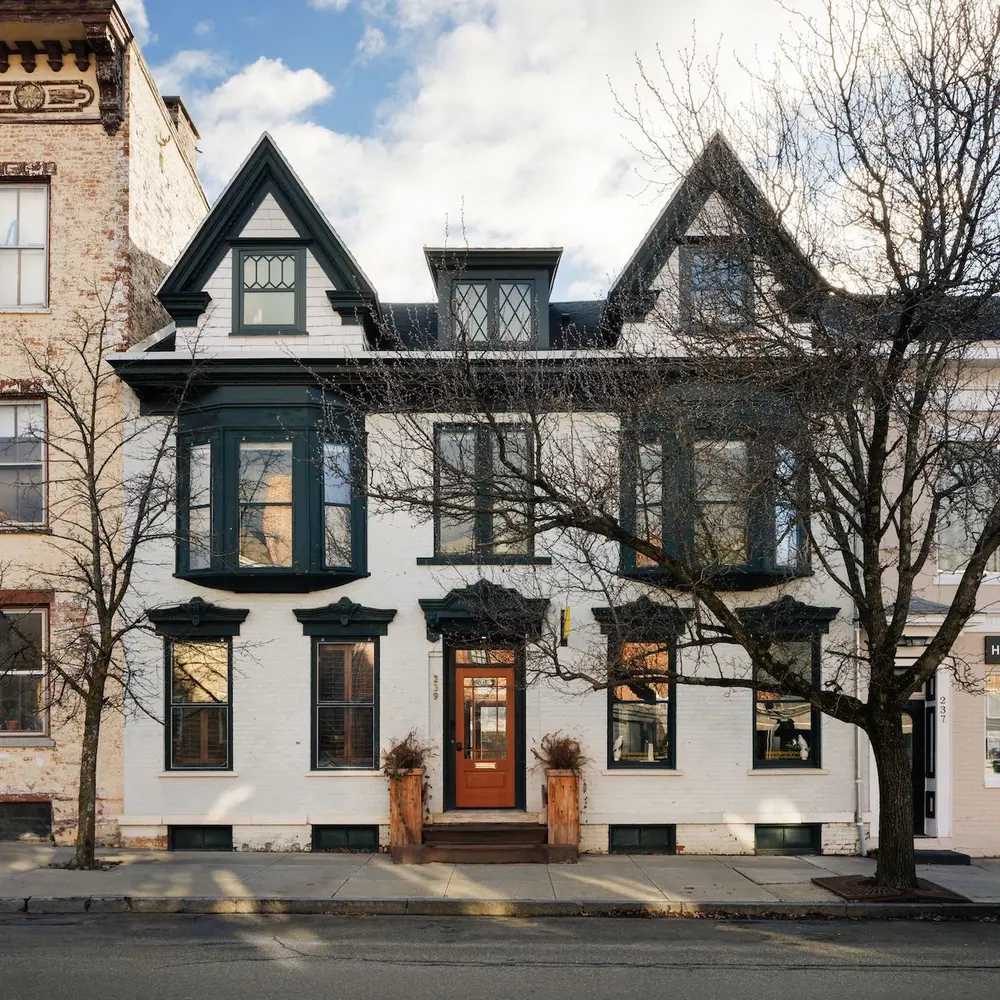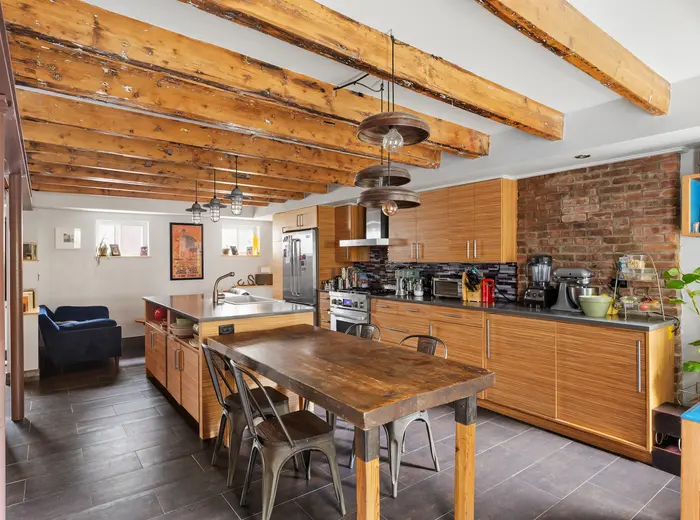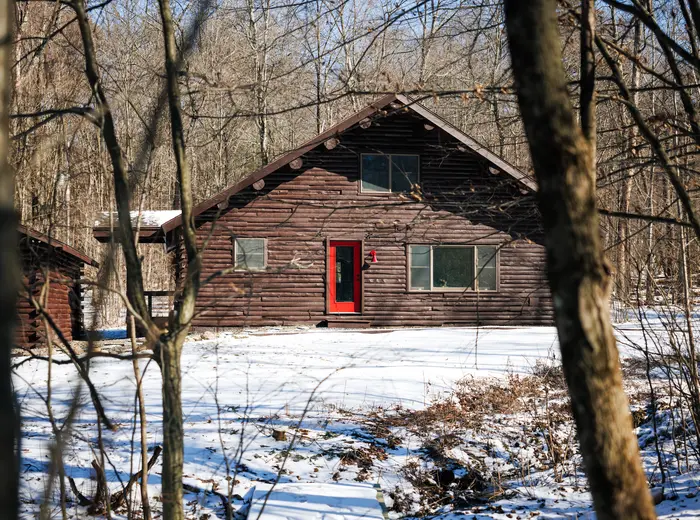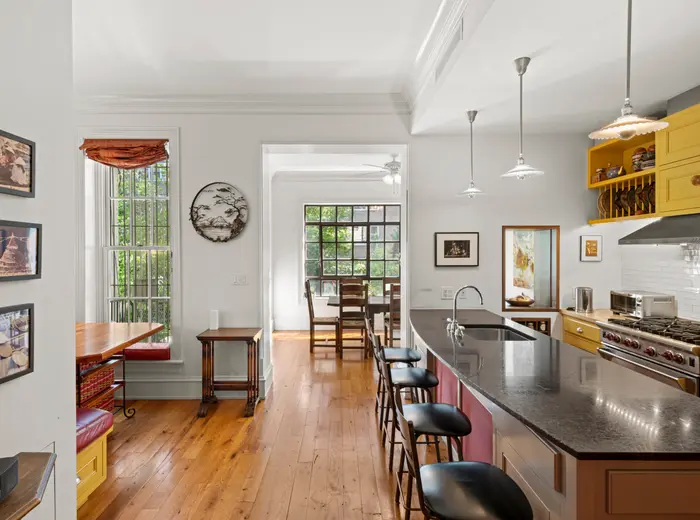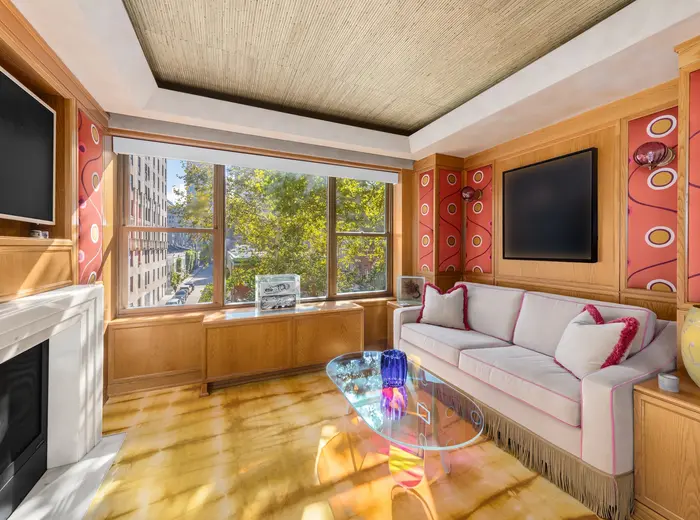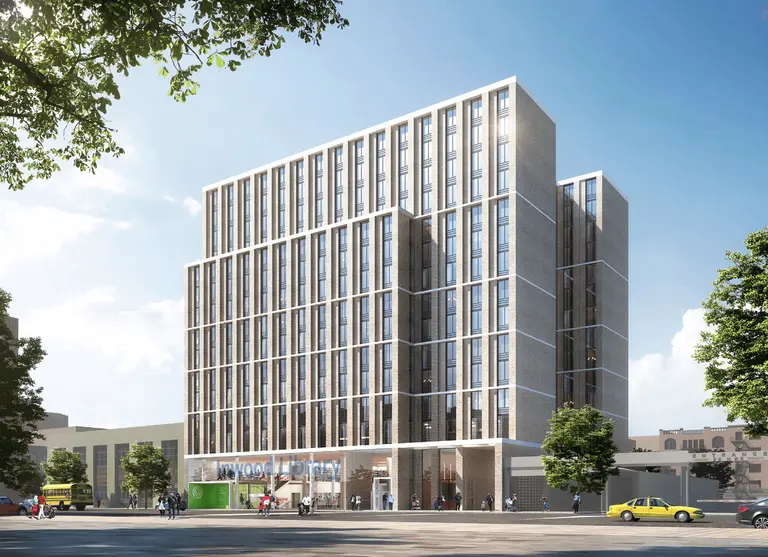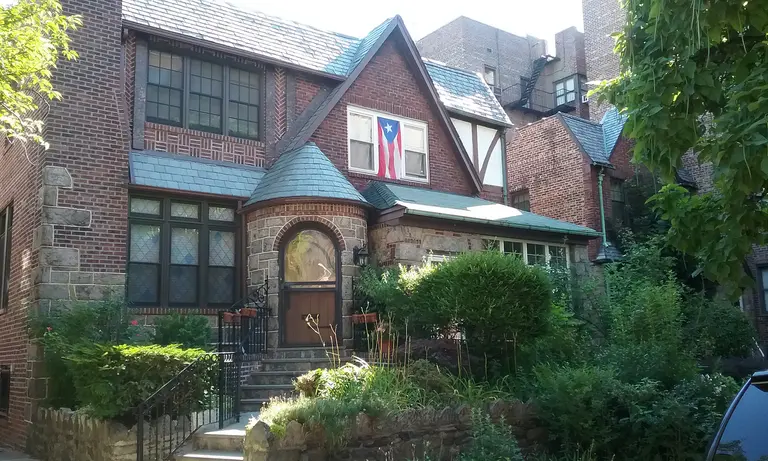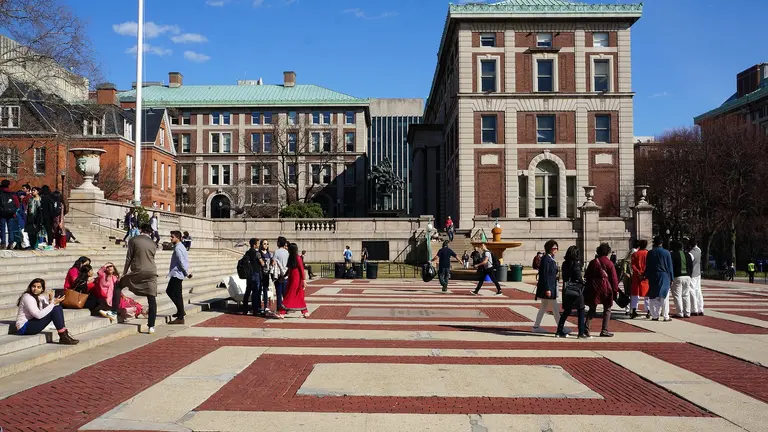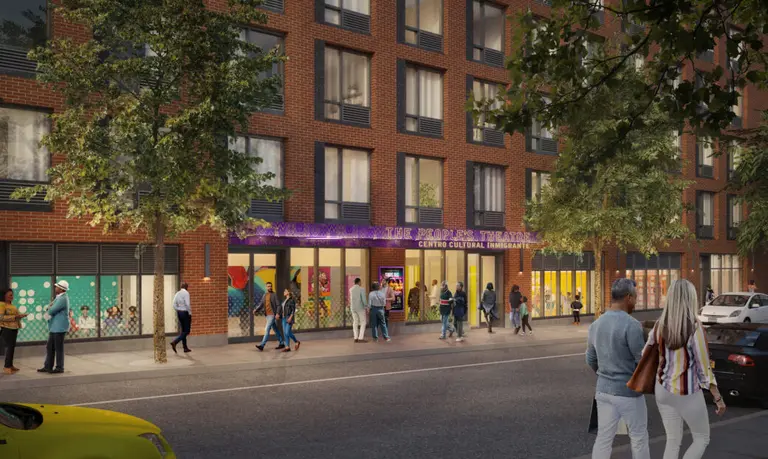59-block Inwood rezoning vote draws protests from residents who fear its character will be lost
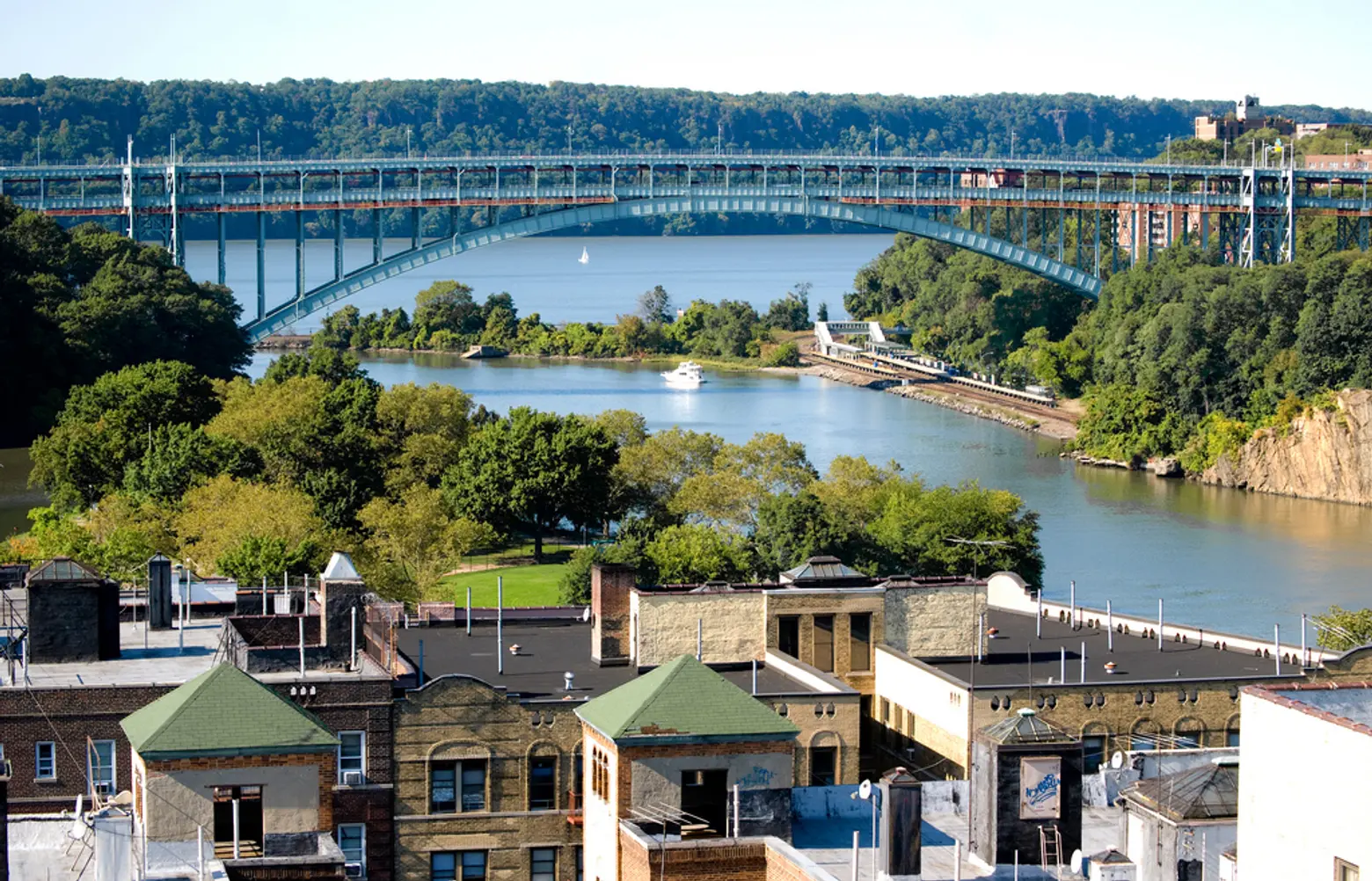
Inwood Hill Park; Image: Dana via Flickr.
On Wednesday the City Council approved a rezoning plan for a 59-block section of Inwood, a neighbhorhood often referred to as the “last affordable neighborhood in Manhattan,” the New York Times reports. The plan was approved last week by the city’s zoning subcommittee and the Land Use Committee. The Inwood rezoning is part of Mayor Bill de Blasio’s plan to rezone neighborhoods across the city as part of the push to create and preserve 300,000 affordable housing units by his goal date of 2026. Inwood is the fifth neighborhood–including the also-controversial East New York and East Harlem–to be approved for rezoning under the plan.
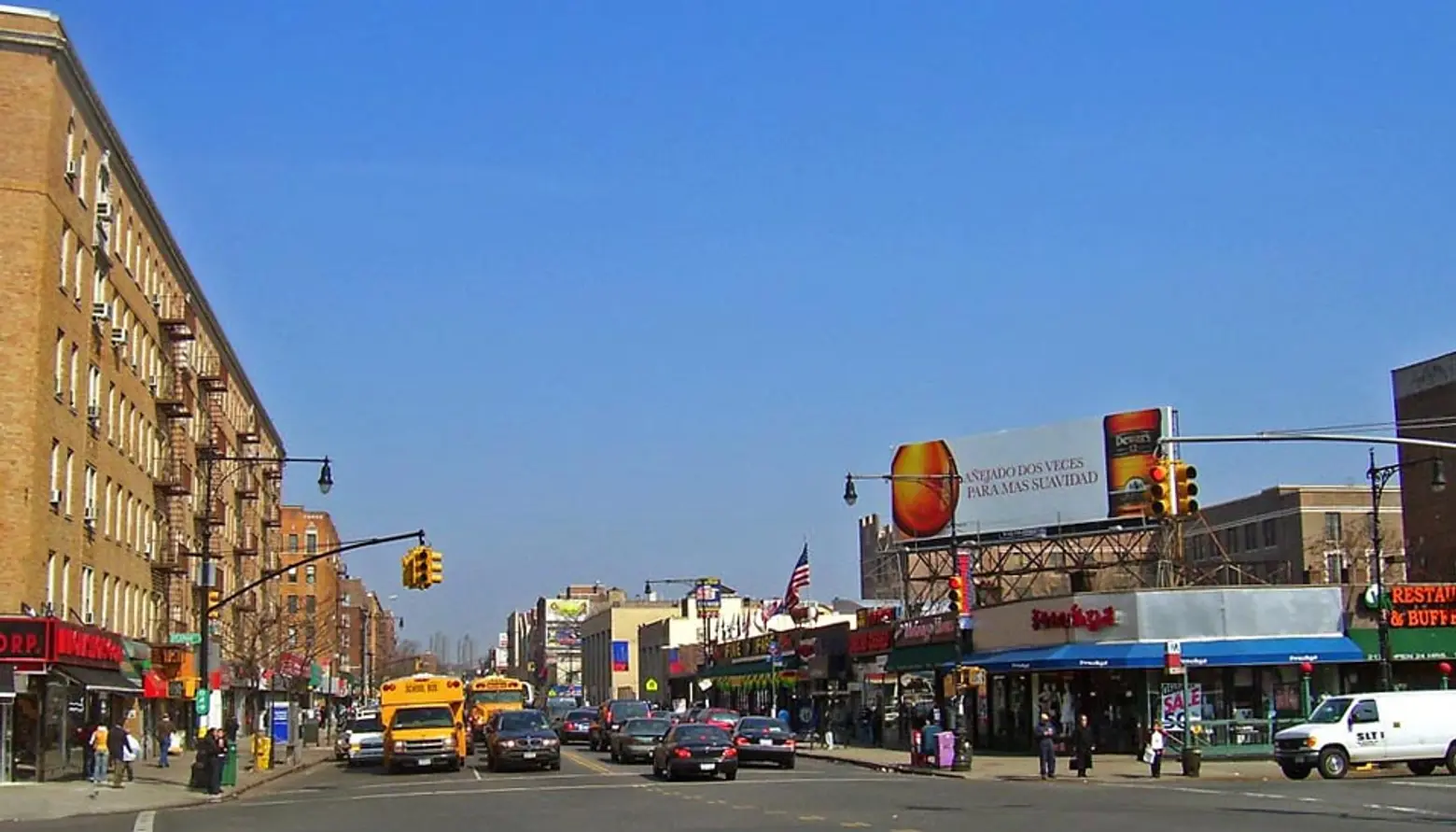
Broadway in Inwood; Image: Wiki Commons.
The somewhat controversial and undeniably complex rezoning strategy had the support of local councilman Ydanis Rodriguez who says that he voted in favor of the plan because it would attempt to balance the two imperatives of preserving the neighborhood’s diverse environment while bringing in much-needed affordable housing and improvements.
The newly-approved zoning allows for buildings between 18 and 30 stories high and includes a combination of market-rate and affordable housing. It would dramatically reconfigure the neighborhood’s industrial area east of 10th Avenue. According to the city, the zoning change will create and keep 4,100 affordable housing units–including 925 affordable units that will be created on city-owned land.
Inwood is home to the last natural forest in Manhattan, the 196-acre Inwood Hill Park, and is known for its riverfront views. Many of its streets are lined low-rise tenements. Almost half the neighborhood’s population is foreign-born; 75 percent of Inwood’s 43,000 residents are Latino, and Inwood has the city’s largest concentration of Dominican residents. 25 percent of Inwood residents live below the poverty line. The neighborhood’s median income of almost $42,000 is also well below the $73,000 approximate median income in Manhattan and the $53,000 city-wide median income.
In addition to bringing in $200 million in public investments including over $50 million in improvements to the George Washington Educational Campus, the city’s rezoning plan also includes a new 20,000-square-foot public library facility that will include 175 units of affordable housing as well as pre-K classrooms and community facilities. An additional 675 units will be created in the aforementioned market rate buildings according to mandatory inclusionary housing rules.
Councilman Rodriguez negotiated to have a business zone known as the “Commercial U,” removed from the rezoning as some residents were concerned that the rezoning area was too large and would harm small businesses. “These negotiations are an opportunity to bring many of the resources we currently lack in our neighborhood,” he said.
The city says the rezoning will fight detrimental gentrification by curbing rent increases that are already hitting the neighborhood, which contains many rent-regulated units but has seen rents in Community District 12, which includes Inwood, Washington Heights and Marble Hill increase at a faster pace–38 percent between 2002 and 2014 vs. 24 percent for all of NYC–than the city’s overall.
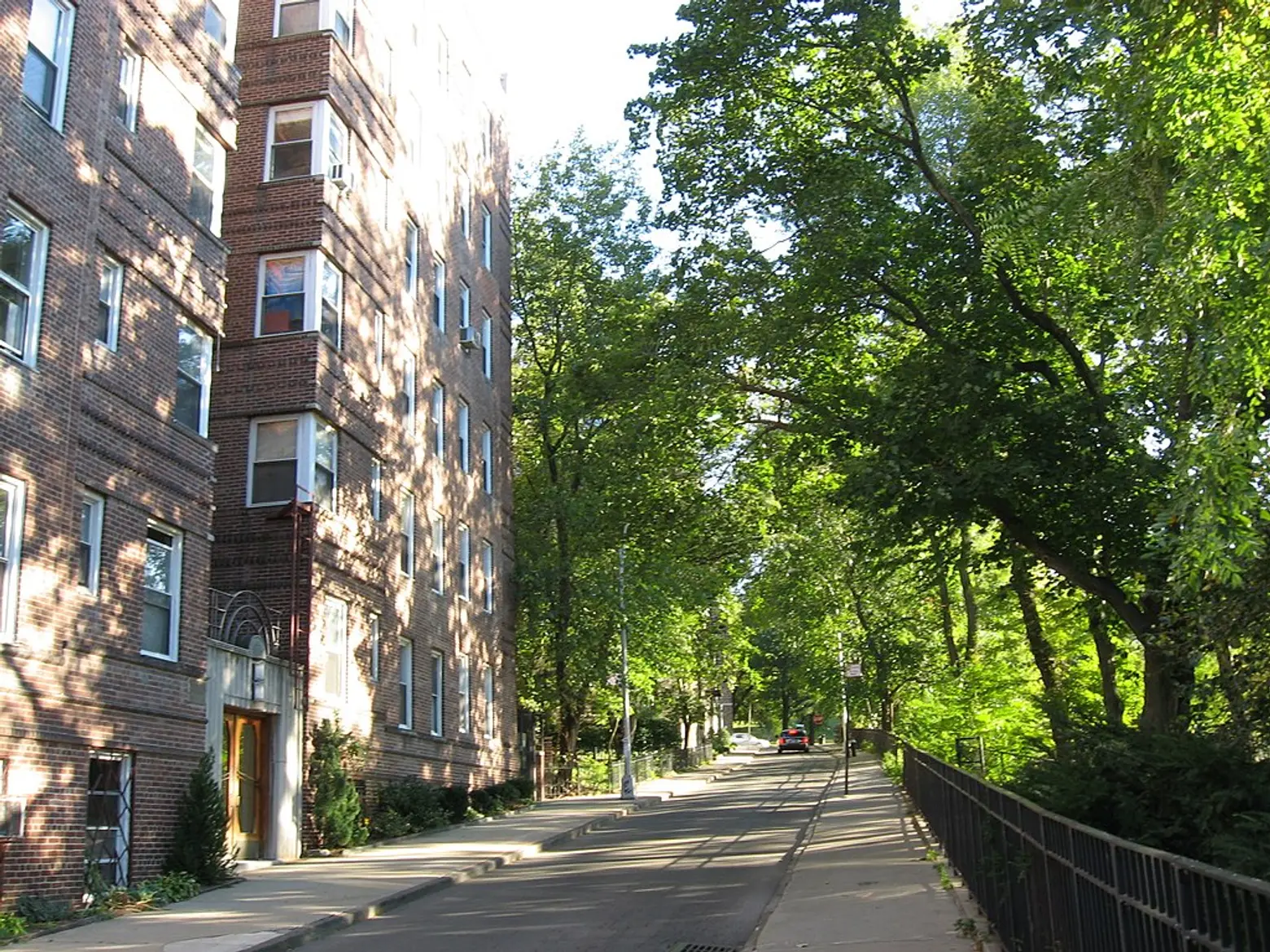
Image: Wiki Commons.
But some in the community feel the impending changes will undermine the character of the diverse neighborhood, which is increasingly becoming home for people displaced from other NYC neighborhoods due to rising rents. As one longtime resident lamented, “Where will we go? This is the last bastion.” There have been several protests in the weeks leading up to the city council vote.
Opponents fear the rezoning isn’t contextual to the the neighborhood’s character: Most new units will be market-rate, which they are concerned will bring residents not interested in its current collection of shops that serve the area’s immigrant population. Ad hoc groups like the Northern Manhattan is Not For Sale Coalition have advocated for capping the height of new developments and for deeper levels of affordability; they feel that improvements shouldn’t have to be dependent on rezoning.
The mayor’s response to the concerns over what he sees as already-happening gentrification in the area was to say that “when the government steps in and creates some rules, and some boundaries and some guarantees of affordability it actually rebalances the equation in favor of the people.”
[Via NYTimes]
RELATED:
- Inwood Library project will have 175 affordable apartments and a new Pre-K
- 22,000 New Apartments Coming to Northern Brooklyn by 2019
- Lawsuit Against City Wants to End Affordable Housing Allotments to Certain Communities
- Should Poor Neighborhoods Stay Poor to Avoid Gentrification? Mayor De Blasio Speaks Out
